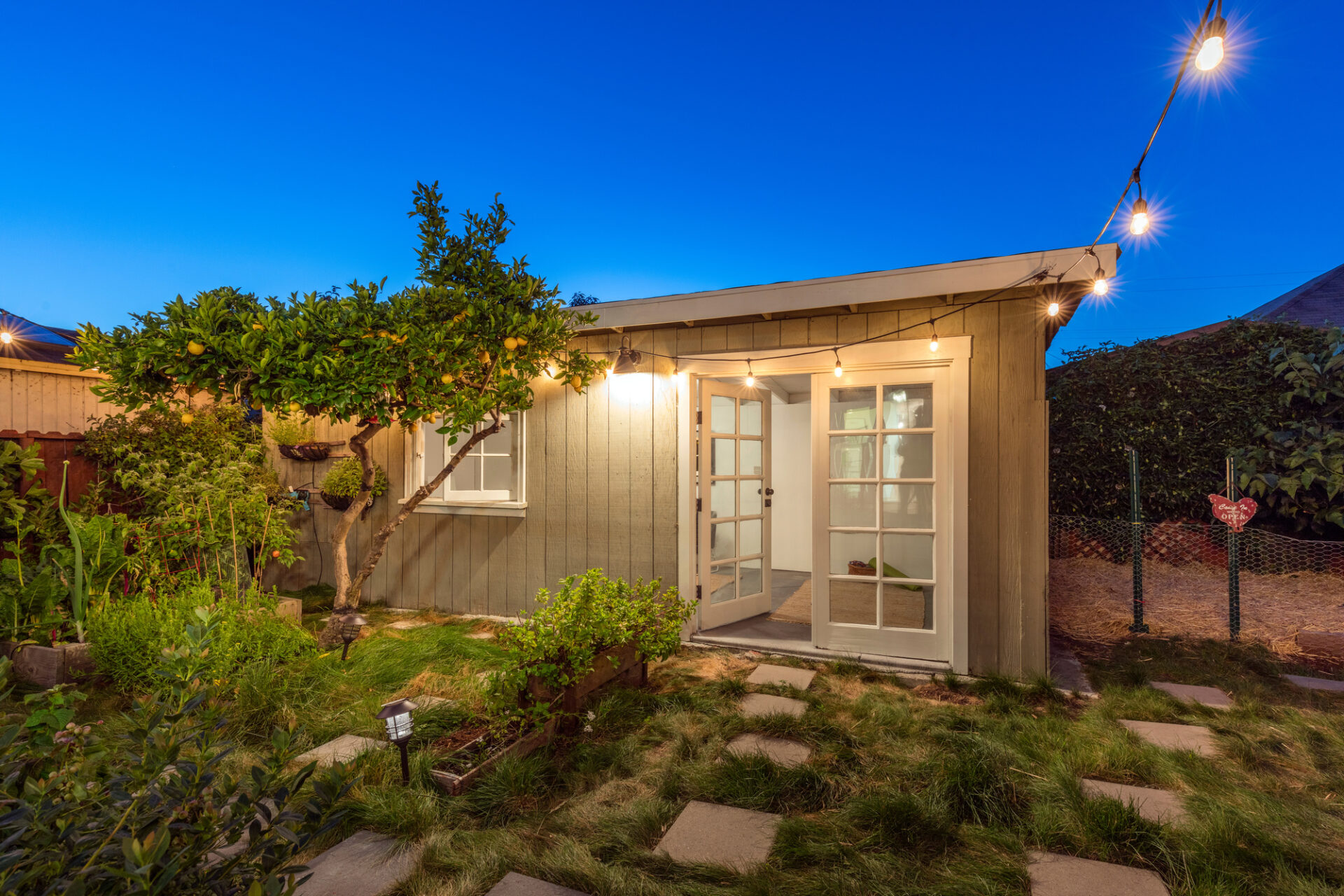In the world of interior design, small spaces present a unique challenge. With the growing trend of downsizing and urban living, many of us find ourselves trying to make the most out of limited square footage. But small doesn’t have to mean cramped or cluttered. In fact, with a few clever design tricks, you can transform a tiny room into a seemingly spacious and stylish haven.
The key illusion – using thoughtful design elements to create a perception of space that belies a room’s actual dimensions. This isn’t just about choosing the right furniture or throwing a mirror on the wall; it’s about understanding how colors, lighting, and layout work together to open up a room and give it a more airy, inviting feel.
In this post, we’ll explore a variety of techniques that can help you turn your compact living area, cozy bedroom, or petite kitchen into a space that feels both larger and more functional. From the magic of color schemes to the strategic placement of lighting and mirrors, these tips are not only practical but also easy to implement, regardless of your decorating experience.
So, whether you’re renovating a small apartment or just looking to refresh a tiny room in your home, these design tricks will empower you to maximize your space without compromising on style. Let’s dive in and discover how you can create the perfect balance of form and function, and make your small space a big hit!
Table of Contents
Color Magic
When it comes to creating an illusion of more space, the power of color cannot be overstated. The right color choices can transform a cramped room into a more open, airy space. Here’s how you can use color to your advantage:
Light and Bright
The use of light colors is a transformative tool for making spaces feel larger and more inviting. Pale hues like soft blues, gentle lavenders, and calming greens, along with the timeless choice of white, have a unique ability to reflect light, giving the room an open and airy quality. It’s also important to consider the ceiling in your color scheme. Painting it a lighter shade than the walls can create an illusion of height and add to the sense of spaciousness.
Monochromatic Magic
A monochromatic color scheme, which utilizes different shades of the same color for walls, trims, and details, can help blur the boundaries within a room. This seamless color flow creates an expansive feeling. To avoid monotony in a single-color palette, introducing a variety of textures can add visual interest and depth, whether through fabrics, rugs, or wall finishes.
Accent Colors
While light colors are effective for creating an illusion of space, introducing pops of bolder color can add depth and vitality to a room. Accent walls or colorful decor elements can break the monotony, but it’s crucial to strike the right balance. Too much color in a small space can be overwhelming, so bold hues should be used sparingly and thoughtfully to create visual harmony.
Reflective and Glossy Finishes
Incorporating glossy finishes in walls or furniture can play a significant role in making a room feel more spacious. These reflective surfaces bounce light around the room, contributing to an open atmosphere. High-gloss paint, lacquered furniture, or shiny metal accents can be particularly effective. A subtle shimmer, like a touch of iridescence in wall paint or decor items, can add depth to the room without making it feel enclosed.
Color Psychology
The choice of colors not only affects spatial perception but also impacts the mood of a room. Cool colors like blues and greens are known for their calming effect, making them ideal for bedrooms and bathrooms. Conversely, warmer hues such as soft yellows or light pinks can create a cozy and welcoming atmosphere, perfect for spaces like living rooms and dining areas. It’s about finding a balance between personal style and the psychological effects of color to enhance both the look and feel of the space.
Lighting and Its Effects
Lighting plays a pivotal role in transforming the perception of space within a room. It’s not just about the intensity or the source of light, but also how it interacts with the room’s design to create a sense of openness. Natural light is a coveted asset in any small space. Maximizing it can dramatically alter the feel of a room, making it appear larger and more welcoming. Consider the placement of windows and how window treatments can be used to enhance natural light. Sheer curtains or blinds that allow light to filter through can brighten up a room without sacrificing privacy.
Artificial lighting should be strategically planned to illuminate dark corners and add depth to the room. Recessed lighting and wall-mounted fixtures provide a sleek look while distributing light evenly. Task lighting, such as under-cabinet lights in a kitchen or a well-placed lamp in a reading nook, not only serves a functional purpose but also adds to the room’s aesthetic appeal.
The color temperature of the light bulbs also impacts the room’s atmosphere. Warmer tones create a cozy feel, suitable for living rooms and bedrooms, while cooler tones, mimicking daylight, are ideal for bathrooms and kitchens, where more visibility is typically required.
Layering light is another technique to enhance the perception of space. Combining ambient, task, and accent lighting can create a dynamic and flexible lighting scheme. This approach allows you to alter the mood of the room according to different times of the day or specific needs, like highlighting a piece of art or a unique architectural feature.
Remember, the goal is to use light in a way that complements the room’s color palette and furniture layout, enhancing the overall sense of space. Thoughtful lighting design can turn a cramped room into a cozy, inviting space that feels much larger than its physical dimensions.
Mirrors and Reflective Surfaces
The strategic use of mirrors and reflective surfaces is an age-old trick in the interior design playbook, known for its effectiveness in creating an illusion of space. Mirrors reflect light and imagery, which can trick the eye into perceiving a room as larger and more open than it actually is. When placing mirrors, consider reflecting a window or another source of natural light to enhance this effect. A large mirror on one wall, for instance, can almost double the visual space of a room, making it appear significantly more spacious.
Reflective surfaces extend beyond just mirrors. Items like glass-top tables, metallic fixtures, and glossy finishes on furniture can also contribute to the illusion. These elements work by bouncing light around the room, enhancing the overall brightness and sense of openness. In kitchens and bathrooms, reflective tiles or backsplashes can open up the space visually while also adding a modern touch to the decor.
The placement of mirrors and reflective elements is key. Position them to maximize the reflection of light and the visual extension of the room. For instance, a mirror placed opposite a window can bring in additional light and a view of the outdoors, further enhancing the sense of openness. However, it’s important to balance these reflective surfaces with other textures and materials to avoid an overly stark or cold ambiance.
Incorporating mirrors and reflective surfaces is not just about functionality; it’s also an opportunity to add a decorative element to your space. From ornate framed mirrors to sleek, contemporary glass pieces, these elements can serve as focal points in the room’s design, marrying aesthetics with practicality.
The Power of Perception
Merging the concepts of decorative techniques and the power of perception, this section delves into how specific design elements can significantly alter the way we perceive the space around us. It’s not just about the physical dimensions of a room, but how it’s presented and experienced.
Using Art and Decor Strategically
Large art pieces, for instance, can become a focal point and draw the eye, creating a sense of depth and expansiveness. The trick is in the scale and positioning of these pieces. Oversized artwork in a small room, paradoxically, makes the room seem larger by creating a visual anchor. Similarly, the strategic use of rugs can define areas within a room, making it feel more organized and, therefore, more spacious. A rug that extends under furniture can pull the room together, while the right pattern can add movement and flow to the space.
Clever Decorative Accents
Decorative elements like vertical lines in wallpaper or shelving can draw the eye upward, creating a sense of height. Light-colored flooring can also expand a space visually, especially when it’s continuous across rooms. Conversely, darker floors can ground a space, providing a sense of depth and warmth.
Minimizing Clutter
A key aspect of creating the illusion of more space is minimizing visual clutter. This doesn’t mean a room has to be sparse, but rather that every element should have a purpose and place. Clean lines, organized displays, and hidden storage solutions can all contribute to a feeling of order and spaciousness. This approach not only affects how we perceive the room but also how we feel in it – less cluttered spaces are often more calming and enjoyable.
Balancing Act
It’s important to remember that these techniques are all about balance. Too much of any one element can have the opposite of the intended effect, making a room feel crowded or over-designed. The goal is to create a harmonious space where each design choice complements the others, collectively contributing to an overall sense of openness and tranquility.
Looking to Transform Your Space?
If you’re inspired by these design tips and ready to bring them to life in your own home, but feel you might need a helping hand, consider reaching out to the experts at Garvin Alexis Construction. Specializing in transforming spaces, their team has the expertise and creativity to turn your vision into reality.
Whether you’re looking at a comprehensive home renovation or just aiming to enhance a single room, Garvin Alexis Construction offers tailored solutions that blend seamlessly with your personal style and the unique dimensions of your space. Their attention to detail and commitment to quality ensures that your renovation project will be handled with the utmost care and professionalism.
Don’t let the confines of a small space limit your design aspirations. Visit Garvin Alexis Construction’s website to explore their services and discover how they can assist you in your next home renovation venture.





